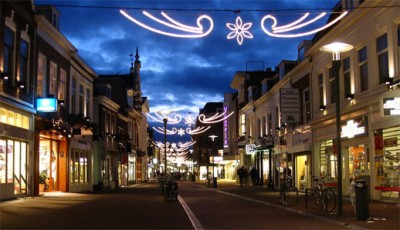The four sizes of urban retail-entertainment districts

When people talk about a retail entertainment district they either have in their neighborhood, or visited elsewhere and want in their neighborhood, it helps to be able to classify the scale. Thanks to New Urban News and retail consultant Robert Gibbs, here’s a little retail primer (with a cooltown perspective):
Corner stores
Location: Within residential neighborhoods
Size: 1500-3000 s.f.
Offerings: Beverages, grocery items, sandwiches.
Minimum required population: 1000 households within walking distance.
Convenience centers
Location: Within residential neighborhoods
Size: 10,000-30,000 s.f.
Offerings: Food, personal services, local offices
Typical venues: Coffeehouse, cafe, deli, bakery, ice cream shop, bank, dry cleaner, florist, market, laundromat, mail center, liquor store, pharmacy
Number: 5-10 small, ground floor businesses
Minimum required population: 2000 households within walking distance.
Neighborhood centers (see image)
Location: Along major transportation corridors in between neighborhoods
Size: 70,000-90,000 s.f.
Offerings: Supermarket, full range of food, goods and services
Typical venues: Supermarket (45,000-60,000), restaurants, bars, shops, including a destination like a live music venue, small theater, microbrewery
Number: 20-40 small, ground floor businesses
Minimum required population: 6000-8000 households within walking/biking distance.
Industrial retail centers (rather than Community centers)
Location: Industrial districts away from residential neighborhoods
Size: 250,000-350,000 s.f.
Offerings: Big box types
Typical venues: Multiplex theater, supermarket, home improvement, office, books, sporting goods, discount department stores
Minimum required population: 50,000 people
Image source: Amersfoort, Netherlands main street by Captain Chaos

Leave a Reply